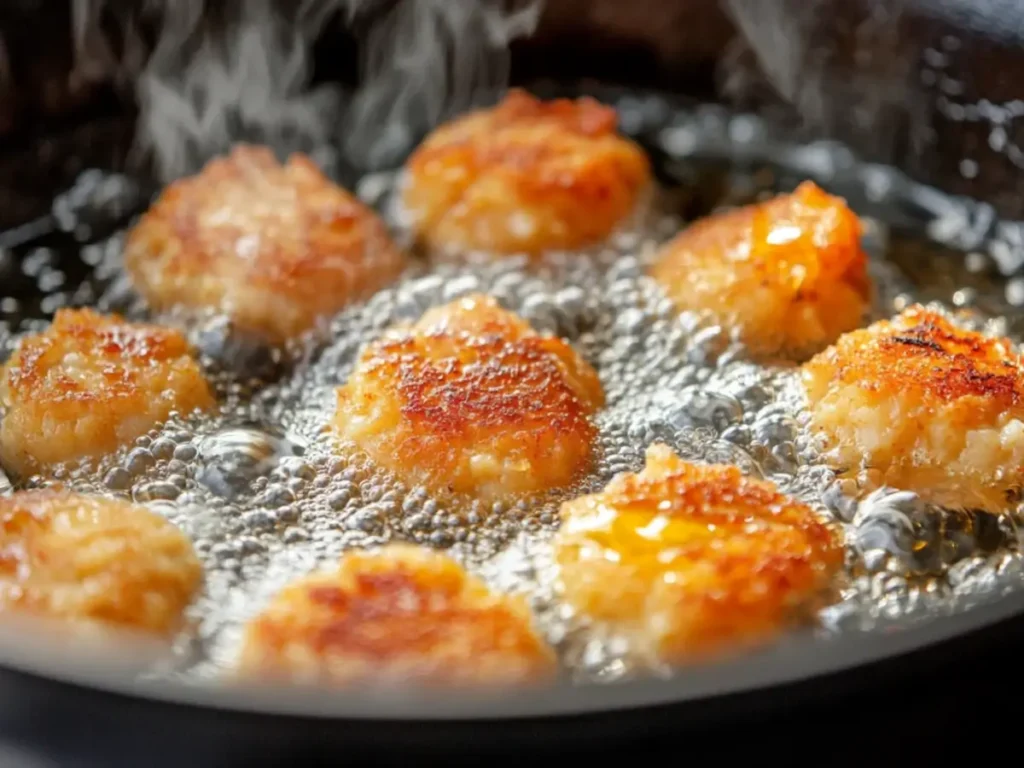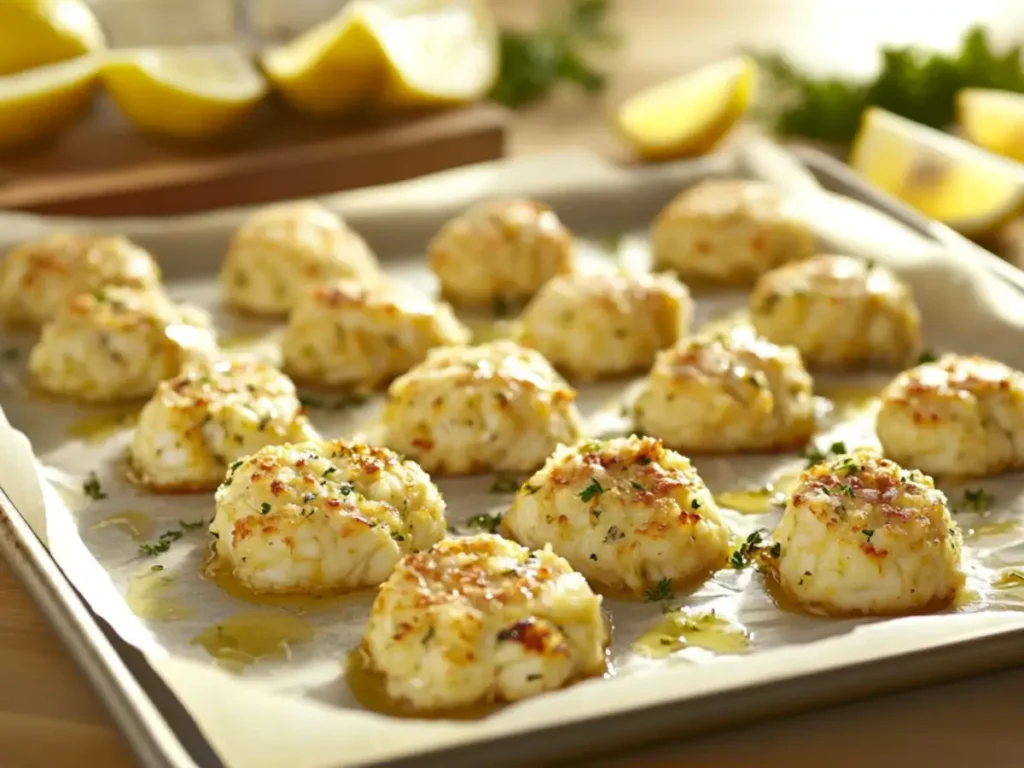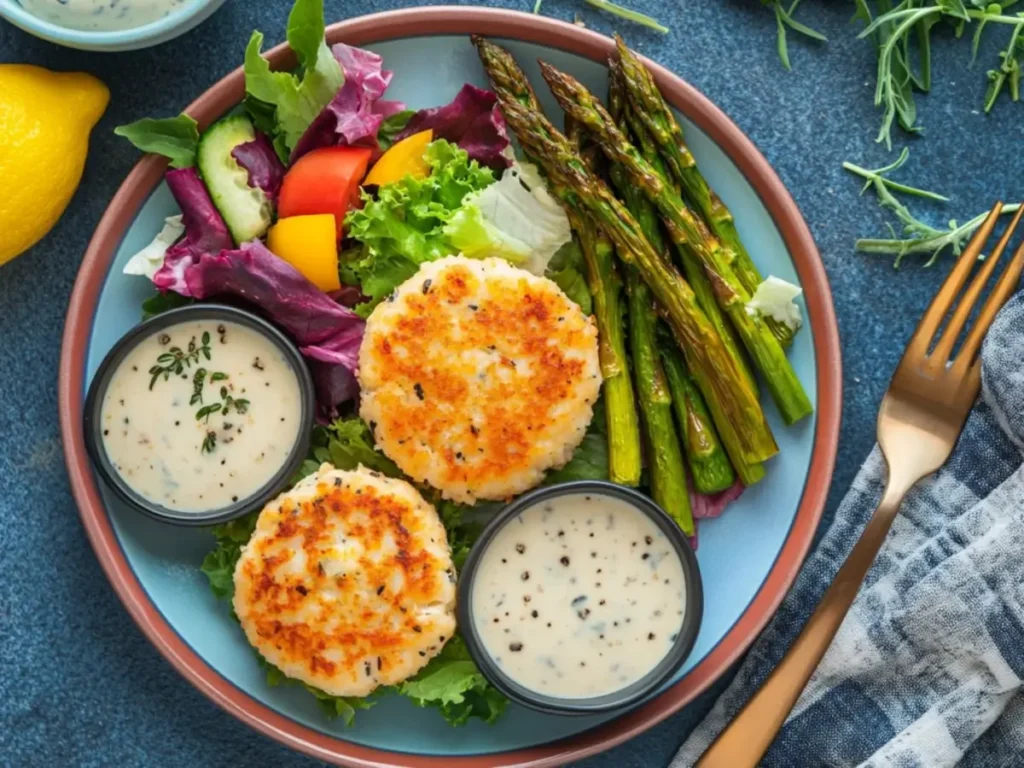Crab cakes are a beloved delicacy, bringing the flavors of the ocean straight to your plate. Whether you’re planning a family dinner or hosting a party, knowing the best way to prepare crab cake can make all the difference. But the question remains: Is it better to fry or bake crab cakes? Let’s explore the pros and cons of each method and discover how they impact the flavor, texture, and healthiness of this iconic dish. Plus, we’ll include tips for the perfect crab balls recipe that everyone will love.
Crab cakes are a staple in American cuisine, especially along the East Coast. They’re made with fresh crab meat, bread crumbs, and seasonings, molded into patties or balls. These cakes are versatile and can be served as a main dish, appetizer, or even in sandwiches. While the traditional way is to fry them, baking has gained popularity for its health benefits. Which method is better depends on your priorities: flavor, texture, or health.
Table of contents
The Art of Frying Crab Cakes

Frying crab cakes is the traditional and most popular method. Why? It creates a crispy golden crust that contrasts beautifully with the soft, flavorful interior. This cooking method adds a layer of indulgence to the crab cake, making them taste more decadent and rich. To fry crab cakes:
- Heat oil in a skillet until shimmering. A cast-iron skillet works particularly well for even heating.
- Gently place the crab cakes in the pan and cook until each side is golden brown, about 4-5 minutes per side.
- Drain on paper towels to remove excess oil, which helps maintain the desired crispness.
Frying enhances the savory flavors and provides a slightly caramelized exterior. It’s a favorite for many seafood lovers, particularly when served with tangy tartar sauce or a spicy aioli.
Baking Crab Cakes: A Healthier Choice?

Baking offers a lighter, healthier alternative to frying. Instead of using oil, the cakes are baked in the oven until golden brown. This method is particularly beneficial for those watching their fat intake or preferring a less oily dish. Here’s how you do it:
- Preheat your oven to 375°F (190°C). Some prefer broiling for extra crispness at the end.
- Place the crab cake on a greased or parchment-lined baking sheet. A silicone mat can also work well to prevent sticking.
- Bake for 15-20 minutes, flipping halfway through to ensure even browning.
The result is a lighter version of crab cakes that still holds its own in terms of flavor. The natural sweetness of the crab meat is more pronounced without the additional oil, making baking a favorite for purists.
Taste and Texture Comparison
When it comes to flavor, frying stands out for its indulgent, robust taste. The oil not only adds richness but also creates a delightful contrast between the crispy crust and the tender interior. Baking, however, allows the crab’s natural sweetness to shine through, offering a more subtle and clean taste.
Texture-wise, frying provides a crispy exterior that is hard to replicate in the oven. Baked crab cakes, while delicious, tend to have a softer, more uniform texture. For those who enjoy a crispy bite, baking might feel less satisfying unless the broiling step is added.
Health Benefits of Baking vs. Frying
For health-conscious individuals, baking is the clear winner. Fried foods often absorb oil, increasing their calorie and fat content. Baking eliminates this issue, providing a lighter option without sacrificing too much flavor.
Additionally, baked crab cakes tend to be lower in saturated fats, which is beneficial for heart health. Those who are mindful of their dietary choices may find baking a guilt-free way to enjoy this seafood classic.
Cooking Time and Convenience
Frying is faster, typically taking about 4-5 minutes per side. However, it requires constant attention and a bit of cleanup due to the oil splatters. Baking, on the other hand, takes longer—usually 15-20 minutes—but requires less hands-on effort. This makes baking a more convenient choice for those juggling multiple kitchen tasks or preparing a large batch.
Tips for the Perfect Fried Crab Cakes
- Use a neutral oil with a high smoke point, such as canola, vegetable, or peanut oil.
- Ensure the oil is hot enough before adding the crab cakes. A small breadcrumb tossed in the oil should sizzle immediately.
- Avoid overcrowding the pan, as this lowers the oil temperature and leads to uneven cooking.
- Let the crab cakes chill in the fridge for at least 30 minutes before frying. This step helps them maintain their shape during cooking.
Tips for Baking Crab Cakes
- Brush the crab cakes with a bit of melted butter or olive oil to encourage browning and add a touch of richness.
- Use a wire rack placed on the baking sheet to promote even air circulation and ensure both sides cook evenly.
- Consider broiling the crab cakes for the last 2-3 minutes to achieve a golden, slightly crisp top.
- Line the baking sheet with parchment paper for easy cleanup and to prevent sticking.
Choosing the Right Ingredients
High-quality ingredients are the foundation of a great crab cake. Here are some tips:
- Crab Meat: Fresh lump crab meat is the best option for its sweet flavor and flaky texture. If fresh isn’t available, high-quality canned crab meat can be a good substitute.
- Fillers: Use fillers like breadcrumbs sparingly to allow the crab’s flavor to shine. Panko breadcrumbs are a great choice for a light texture.
- Seasonings: Old Bay seasoning is a classic choice, complemented by Dijon mustard, Worcestershire sauce, and fresh herbs like parsley.
- Binders: Eggs and mayonnaise help hold the crab cake together. Use them in moderation to avoid a mushy texture.
Crab Balls Recipe for Any Occasion
Looking for an even more detailed guide? Check out this Ultimate Crab Balls Recipe for step-by-step instructions and tips.
Crab balls are perfect for gatherings, offering bite-sized portions packed with flavor. Whether you’re hosting a party or looking for a fun twist on traditional crab cakes, crab balls deliver both convenience and taste. They pair excellently with a variety of dipping sauces, from tangy tartar to spicy remoulade. The recipe here is versatile enough to adjust for different flavor profiles, allowing you to make them spicy, cheesy, or classic depending on your preferences.
Ingredients
- 1 lb lump crab meat
- 1/2 cup breadcrumbs
- 1 egg, beaten
- 2 tbsp mayonnaise
- 1 tsp Dijon mustard
- 1 tsp Old Bay seasoning
- 1 tbsp fresh parsley, chopped
- Salt and pepper to taste
Instructions
- Combine all ingredients in a bowl, mixing gently to avoid breaking up the crab meat.
- Shape into small balls or patties. Chill for 30 minutes to firm them up.
- For frying: Heat oil in a skillet and cook until golden brown on both sides. For baking: Arrange on a parchment-lined baking sheet and bake at 375°F (190°C) for 15-20 minutes, flipping halfway through.
Serve with your favorite dipping sauce or a fresh squeeze of lemon.
Common Mistakes to Avoid
- Overmixing: This can break down the delicate crab meat and lead to a dense texture.
- Using too much filler: Overloading with breadcrumbs or other fillers can overshadow the crab’s flavor.
- Skipping the chill step: Chilling helps the cakes hold their shape and prevents them from falling apart during cooking.
- Not testing the oil temperature: Adding crab cakes to oil that isn’t hot enough can result in greasy, unevenly cooked cakes.
Pairing Crab Cakes with Sides

Curious about other classic dishes and their variations? Read about the Difference Between Creme Brulee and Custard for more culinary inspiration.
Pairing crab cakes with the right sides elevates your meal to the next level. A fresh garden salad with a light vinaigrette brings a refreshing contrast to the richness of the crab cakes. For a heartier option, try roasted garlic potatoes or creamy coleslaw. Don’t forget to include dipping sauces like a lemon-dill aioli or classic cocktail sauce to enhance the flavors further. Combining textures and flavors makes the meal satisfying and memorable.
Crab cakes pair beautifully with a variety of sides. Here are some ideas:
- Fresh Salads: A crisp garden salad or coleslaw provides a refreshing contrast.
- Vegetables: Roasted asparagus, grilled corn, or sautéed spinach are excellent options.
- Potatoes: Garlic mashed potatoes or roasted baby potatoes complement the richness of crab cakes.
- Sauces: Tangy tartar sauce, spicy remoulade, or a lemon-butter drizzle add a flavorful finishing touch.
The Verdict: Frying vs. Baking
So, which is better? The answer depends on your priorities and preferences. Frying delivers a crispy, indulgent experience, while baking offers a healthier, cleaner option. If you’re cooking for a special occasion, frying might feel more celebratory. For everyday meals, baking is an excellent choice that balances flavor and health. Why not try both methods and let your taste buds decide?
Conclusion
Crab cakes are a versatile and delicious dish that can be adapted to suit various tastes and dietary needs. Whether you choose to fry or bake, following the tips and techniques in this guide will help you create crab cake that impress every time. By experimenting with both methods, you can discover your favorite way to prepare this seafood classic.
FAQs
1. Can you fry crab cakes without oil?
Yes, you can use an air fryer for a similar crispy texture with less oil.
2. How do you prevent crab cakes from falling apart?
Chill them before cooking and avoid overmixing the ingredients.
3. What is the best crab meat for crab cakes?
Fresh lump crab meat is the best choice for its sweet flavor and texture.
4. Can you freeze crab cakes?
Yes, freeze them uncooked and cook directly from frozen when ready.
5. What’s the difference between crab cakes and crab balls?
Crab balls are smaller, bite-sized versions of crab cakes, perfect for appetizers.
